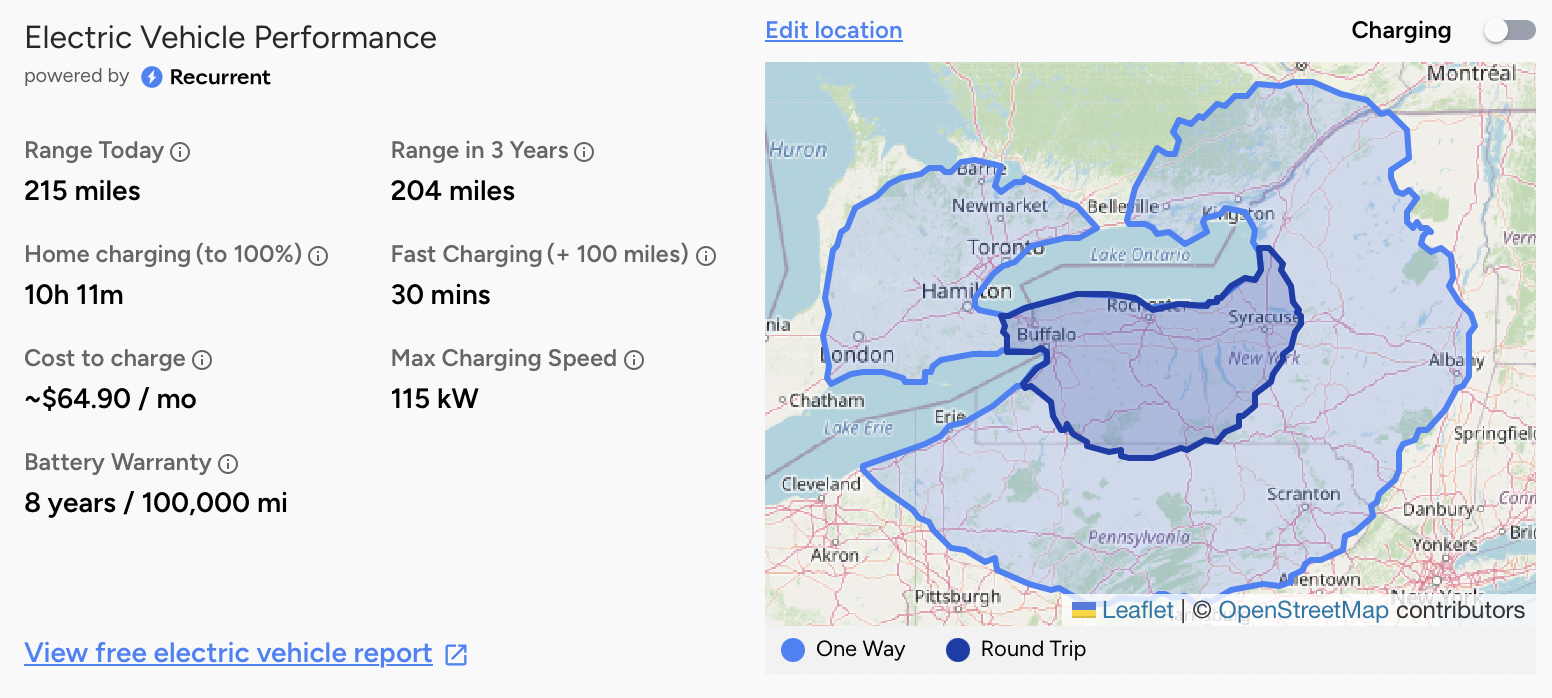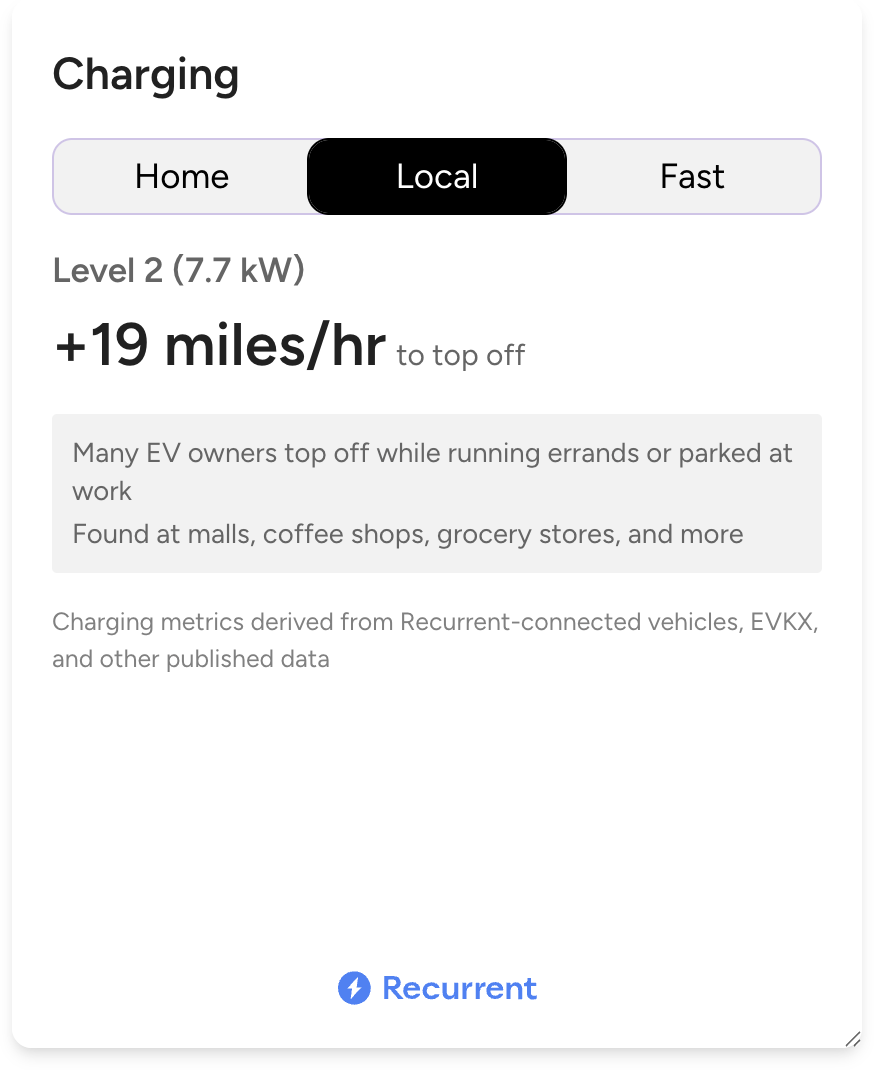Like buying anything pre-owned, buying a used car – whether gas or electric – always comes with risks, although EVs have unique considerations.
The biggest difference? With an EV, the battery is the heart of the car, and its health is paramount. When considering any used EV, try to learn whatever you can about its battery history.
- Was it a fleet car that was routinely fast charged?
- Has it had a battery replacement?
- What’s the remaining battery warranty?
Some manufacturers provide some of this information, but you can also use third-party tools for a neutral perspective. Recurrent offers important insights on many dealership-sold vehicles.

Here are six more important things to check out when shopping for a used EV:
Expected range
The range of an electric car changes slightly with age. This is a natural process called battery degradation. While shoppers should not be too afraid of this, they should be aware of it and make a purchase with reasonable expectations of the car’s current max range.

Recurrent offers shoppers insights about a vehicle's expected range by using data from thousands of similar cars that are actively connected to the Recurrent platform.
.png)
In terms of practical advice, try this.
When you get into the car, take a picture of the dash. You want the range estimate, the temperature outside, the odometer, and the efficiency. Those numbers may be disappointing to look at now, since the car has been sitting on the lot and the BMS may be a little uncalibrated as a result. You’ll want to see if by the end of the drive, do those numbers look more reasonable. Drive the car like you normally would, and use the HVAC like you normally would. Take a picture at the end of the test drive and make sure to include both city driving and highway driving.
Take the change in odometer / change in state of charge to get a rough estimate that day of max real range. For instance, if you drove 20 miles and the state of charge dropped 10%, then 20 miles is approximately 10% of your total range. However, make sure to adjust expectations if it's really cold out, since that can drop range by 20-30% depending on the car. Make sure you are comfortable with the number you get.
Charge Rate
This is an in-depth but scientist-approved way to check out a lot on an EV.
Before you get to the dealership, as them not charge the EV past 80%. Why? Because after you test drive that vehicle, you are going to want to double check its charging rate, which slows down a lot past 80% on a DC fast charger. Try and use 10-20% of the battery up while testing the EV and then plug it into the fast charger at the dealership. Does the charge rate up to 80% match your expectations?

Hint: make sure you know if you're using a fast charger or a level 2 charger. If possible, try both sorts of chargers to make sure that the charge speeds match your expectations.
Vehicle history
A vehicle history report is standard for any used car purchase, including EVs. Services like AutoCheck can provide detailed histories, including previous ownership, accident reports, title status, and service records. Look for red flags such as salvage titles, frequent ownership changes, or consistent service issues.
For EVs, also check for any recalls specific to the model (for example, Chevy Bolt) and ensure they have been addressed.
EV-specific Features
- Does your EV have a "vehicle-to-load" (V2X) mode like the Kia EV6? Test out the feature by charging your phone from the vehicle.
- EVs tend to have a lot of USB ports -- make sure they all work.
- Many EVs come with different modes for driving (for instance, ECO Mode, Sports Mode, Normal Mode, Snow mode). Figure out how to switch to those and see how they perform.
- Does the vehicle have a remote parking assist feature or autopilot? Test that out. Have the dealer show you how to use it.
- Does the vehicle allow you to change the intensity of regenerative braking? Try out the different levels in a parking lot and see how you like it.
Maintenance and service history
While electric vehicles generally have lower maintenance needs than gas cars, they still require regular upkeep, like tire rotations and alignments. Review the service history to ensure the car has been properly maintained.
Consistent maintenance records indicate a well-cared-for vehicle, which can translate to fewer problems down the road.
Warranty coverage
Electric vehicles typically come with two types of warranties: the basic vehicle warranty and the high-voltage battery warranty. The battery warranty is particularly important as it often extends longer than the general vehicle warranty and covers the most expensive components in the vehicle. Knowing what is still covered can provide peace of mind and save money on potential repairs. Check the terms and conditions to see if the warranty is transferable to a new owner and if there are any specific conditions that need to be met.
Finally...Don’t be afraid to buy used electric cars
Our #1 piece of advice is to not be afraid of used electric cars. Battery failure is very rare and these cars are holding up much longer than most people expected – even hundreds of thousands of miles.
If you do your homework and pay a reasonable price, you should be really happy with your purchase.
Want more info on battery health? Download the used EV e-book.





